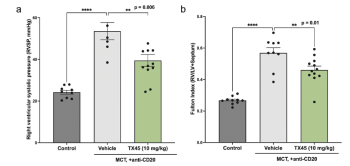The information in this preliminary proxy statement/prospectus is not complete and may be changed. AVROBIO may not sell the securities described in this preliminary proxy statement/prospectus until the registration statement filed with the Securities and Exchange Commission is effective. This preliminary proxy statement/prospectus is not an offer to sell and it is not soliciting an offer to buy these securities in any jurisdiction where the offer or sale is not permitted.
PRELIMINARY PROXY STATEMENT/PROSPECTUS
SUBJECT TO COMPLETION, DATED FEBRUARY 14, 2024

|

|
PROPOSED MERGER
YOUR VOTE IS VERY IMPORTANT
To the Stockholders of AVROBIO, Inc. and Tectonic Therapeutic, Inc.,
AVROBIO, Inc., a Delaware corporation (“AVROBIO”), and Tectonic Therapeutic, Inc., a Delaware corporation (“Tectonic”), entered into an Agreement and Plan of Merger and Reorganization (the “Merger Agreement”) on January 30, 2024, pursuant to which, among other matters, Alpine Merger Subsidiary, Inc., a direct, wholly owned subsidiary of AVROBIO (“Merger Sub”), will merge with and into Tectonic, with Tectonic surviving as a wholly owned subsidiary of AVROBIO (such transaction, the “merger”). After the completion of the merger, AVROBIO will change its corporate name to “Tectonic Therapeutic, Inc.” The surviving corporation following the merger is referred to herein as the “combined company.”
At the effective time of the merger (the “effective time”), each share of Tectonic common stock, par value $0.0001 per share (“Tectonic common stock”), after giving effect to the conversion of each share of Tectonic preferred stock, par value $0.0001 per share (“Tectonic preferred stock”), into Tectonic common stock as well as the issuance of the private financing shares (as defined below) and of Company SAFEs (as defined below) will be converted into the right to receive a number of shares of AVROBIO common stock, par value $0.0001 per share (“AVROBIO common stock”), equal to the exchange ratio described in more detail in the section titled “The Merger Agreement—Exchange Ratio” beginning on page 227 of this proxy statement/prospectus. The final exchange ratio is subject to adjustment prior to the closing of the merger (the “closing”) based upon AVROBIO’s net cash (as defined in the Merger Agreement) (“AVROBIO’s net cash”) at closing. As a result, AVROBIO securityholders could own more, and Tectonic securityholders could own less, or vice versa, of the combined company. Based on AVROBIO’s and Tectonic’s capitalization as of January 30, 2024, the date the Merger Agreement was executed, and taking into account AVROBIO’s anticipated closing cash position, giving effect to the proposed AVROBIO reverse stock split (the “reverse stock split”) and based on certain other assumptions, the exchange ratio (the “exchange ratio”) is currently estimated to be equal to approximately 0.74458326 shares of AVROBIO common stock for each share of Tectonic capital stock. The exchange ratio is subject to adjustment as described below, including if AVROBIO’s net cash as of closing is lower than $64.5 million or greater than $65.5 million. AVROBIO management currently anticipates that AVROBIO’s net cash as of closing will be approximately $65.0 million to $75.0 million, and the exchange ratio is currently estimated to be equal to approximately 0.74458326 (assuming (i) $65.0 million in AVROBIO net cash as of closing, (ii) a one-for-ten reverse stock split, and (iii) the private financings (as defined below) in Tectonic being in the amount of $130.7 million.
In connection with the merger, AVROBIO will assume Tectonic’s Equity Incentive Plan (as defined below). Each outstanding and unexercised option to purchase shares of Tectonic common stock immediately prior to the effective time will be assumed by AVROBIO and will be converted into an option to purchase shares of AVROBIO common stock, with necessary adjustments to the number of shares and exercise price to reflect the exchange ratio.
In connection with the merger, certain investors have agreed to purchase shares of Tectonic common stock at a purchase price of $12.39908 per share subject to and immediately prior to the closing, pursuant to the terms of a subscription agreement entered into by such investors and Tectonic (the “Subscription Agreement”), and certain investors have consummated or will consummate certain additional purchases of Tectonic common stock pursuant to the conversion of certain simple agreements for future equity (“SAFEs”) entered into by such investors and Tectonic (the “Company SAFEs”), for an aggregate purchase price among the transactions contemplated by the Subscription Agreement and such Company SAFEs of approximately $130.7 million






















